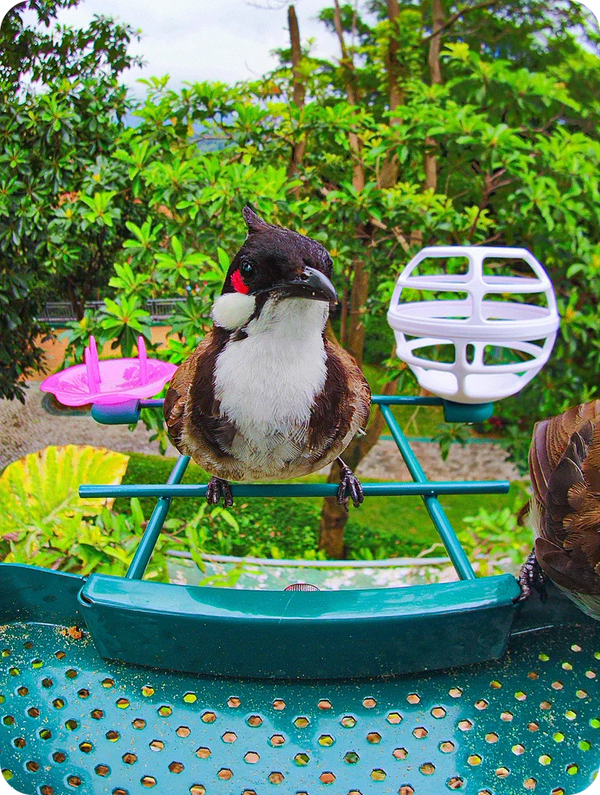Unlock the Secrets to Transforming Your Backyard into a Birdwatcher's Paradise!
Birdwatching is not just a hobby; it's a gateway to connecting with nature and witnessing the beauty of wildlife in your own backyard. Setting up bird feeders can bring a delightful array of feathered friends into your space, creating a vibrant ecosystem right outside your window. Attracting birds is not only enjoyable but also beneficial for the environment, as birds play a crucial role in pollination and pest control. In this article, we will explore effective techniques and strategies for attracting birds to your feeder, including understanding their behavior, choosing the right feeder, selecting the best bird food, and enhancing your backyard to be more bird-friendly. Let’s dive into the enchanting world of birdwatching!

Understanding Bird Behavior
To effectively attract birds to your feeders, it's essential to understand their natural habits. Birds have specific feeding times, often being most active at dawn and dusk. Knowing this can help you optimize the timing of your feeding. Additionally, different species have varied food preferences; for instance, some birds prefer seeds while others might be more inclined towards fruits or insects. Seasonal changes also play a significant role in bird behavior. In winter, birds may flock to feeders for a reliable food source when natural options are scarce, while in spring, they may be more focused on nesting. Observing local bird activity can provide insights into when and what to offer, making your feeding efforts more successful. A friend of mine once set up a simple feeder and was amazed to see a diverse array of birds show up when he adjusted the feeding schedule to align with their natural habits.
Choosing the Right Feeder
The type of feeder you choose can greatly affect the variety of birds that visit your yard. There are several kinds of feeders, including tube feeders, platform feeders, and hummingbird feeders, each designed for different types of food and bird species. Tube feeders are great for small songbirds like finches, while platform feeders can accommodate larger birds and a variety of food types. When placing your feeders, consider visibility; birds prefer feeders that are easily accessible but also have some cover nearby to feel safe from predators. Positioning feeders near trees or shrubs can create a welcoming environment for birds to approach. My neighbor found success by placing her feeders near a flowering bush, which attracted not only birds but also butterflies, enhancing the beauty of her yard.
Selecting the Best Bird Food
The right bird food is essential for attracting various species. Black oil sunflower seeds are a favorite among many birds, including cardinals and chickadees, due to their high oil content. Nyjer seeds are excellent for attracting finches, while suet is a high-energy food that appeals to woodpeckers and nuthatches. Consider offering a mix of seeds, nuts, and fruits to cater to a wider range of birds. Additionally, providing fresh water can be a significant draw, especially during hot months. A friend of mine once experimented with different food types and found that offering suet in winter attracted woodpeckers and other birds she never saw in summer, highlighting the importance of seasonal food choices.
Creating a Bird-Friendly Environment
Enhancing your backyard with natural elements can make it more inviting to birds. Planting native flowers, shrubs, and trees can provide natural food sources and shelter. Creating a water feature, like a birdbath or small pond, can also attract birds looking for a place to drink and bathe. Additionally, providing nesting boxes can encourage birds to settle in your yard. A well-maintained garden with diverse plant life not only attracts birds but also supports other wildlife, creating a harmonious ecosystem. I remember visiting a friend's home where she incorporated various plants and a small fountain; it was a haven for birds, and we spent hours watching them flit about.
Maintaining Your Feeder and Food Supply
Regular maintenance of your bird feeders is crucial to keep birds returning. Clean feeders regularly to prevent mold and spoilage, as dirty feeders can deter birds and even spread disease. Make it a habit to refill the feeders frequently, especially during peak feeding times. If you notice a decrease in visitors, check the food supply and cleanliness of the feeder. Consistency is key; birds will come to rely on your feeders as a food source. By maintaining a clean and plentiful supply, you’ll ensure a steady stream of feathered visitors to your backyard.
Key Takeaways for Attracting Birds
Attracting birds to your feeder can transform your backyard into a vibrant birdwatching paradise. By understanding bird behavior, choosing the right feeder and food, creating a bird-friendly environment, and maintaining your feeders, you can invite a diverse array of species into your space. The joy of watching birds flit about while you enjoy your morning coffee is unparalleled. Implement the techniques discussed in this article, and you’ll not only create a welcoming environment for birds but also foster a deeper appreciation for nature in your daily life. Start your journey into birdwatching today, and experience the beauty and serenity it brings!








